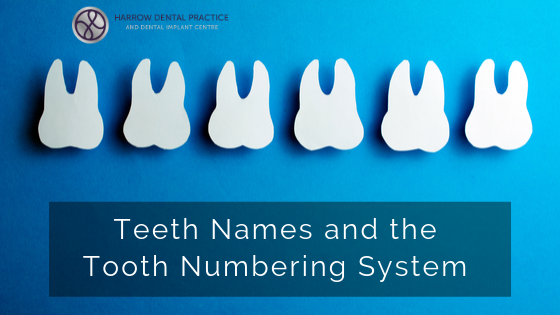Ever wondered what your dentist was talking about when they are describing your teeth to the nurse? When they say that tooth “44” as a filling… Which tooth is this?
One of the top dental searches on Google is for teeth names and also for the numbering system used to classify each of the human teeth. There is also a difference between the standard numbering systems in the UK and the international system so will go through both of these in this article.
There are quite a few different ways of using a notational system, including the international standard or universal numbering system which is widely used internationally. Let’s start by looking at the teeth names first…
The Names for Adult Teeth
Starting at the tooth in the front and working backwards the tooth names are:
- Central.
- Lateral.
- Canine.
- 1st premolar.
- 2nd premolar.
- 1st molar.
- 2nd molar.
- 3rd molar.
This is the same on the left and right side making 16 teeth on the top, it is also reflected on the bottom with another 16 teeth making 32 teeth in total.
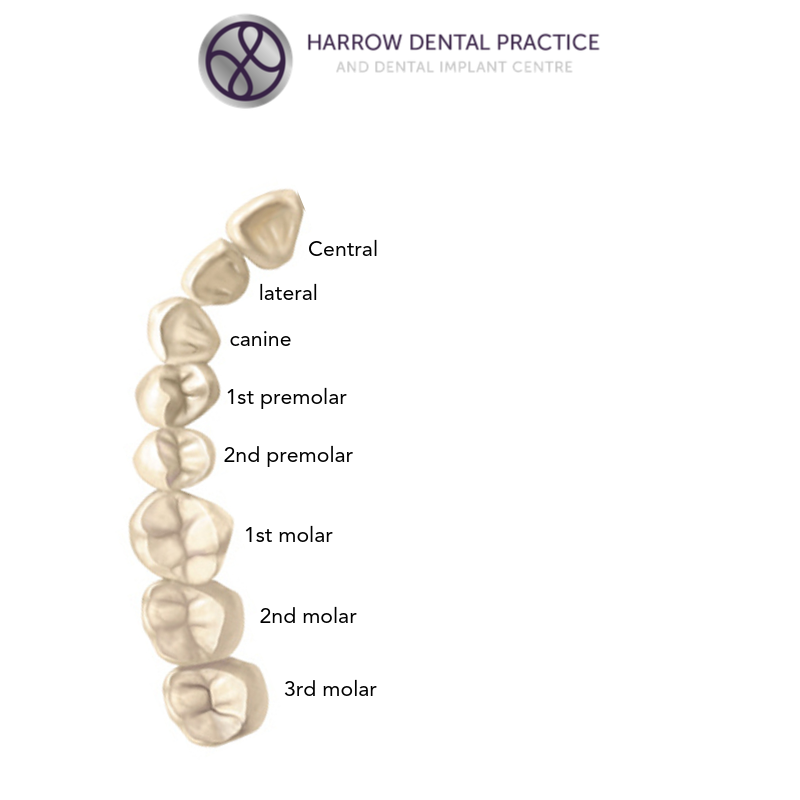
Adult tooth numbering system
Very often in the UK the Palmer notation method is used, this was named after Dr Corydon Palmer a dentist from Ohio. It uses a simple system to represent the quadrant in the mouth and whether it is up, lower, left or right. It is always indicated by the PATIENTS left and right, never the person sitting opposite the patient and viewing.
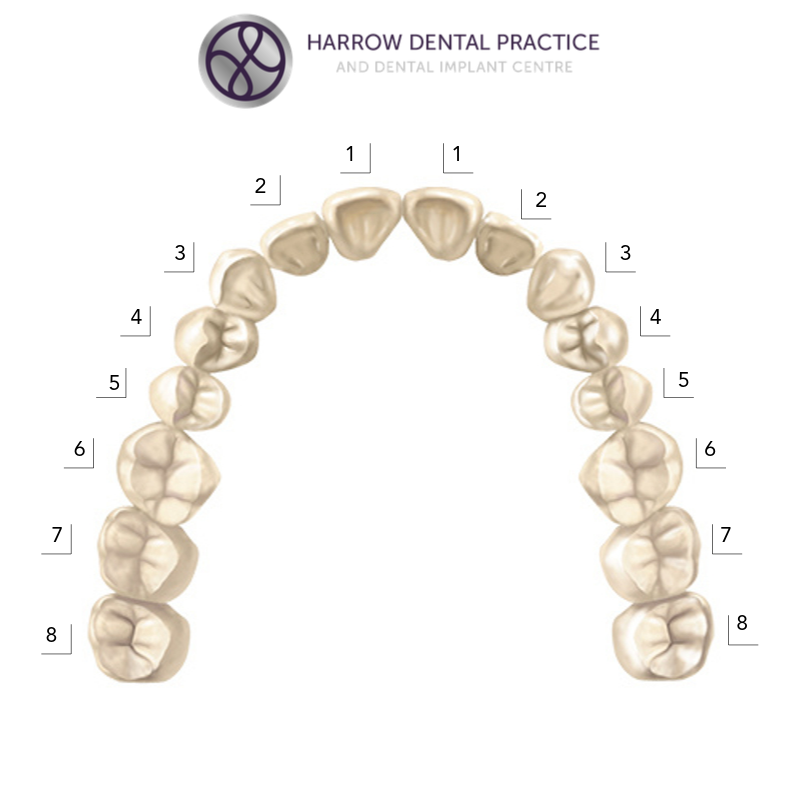
So if a dentist wanted to talk about the permanent dentition 1st premolar on the right-hand side (remember it’s always the patient’s right) you would hear them talk about upper right 4, sometimes abbreviated to UR4, this would then have the notation:

… They would be talking about this tooth…
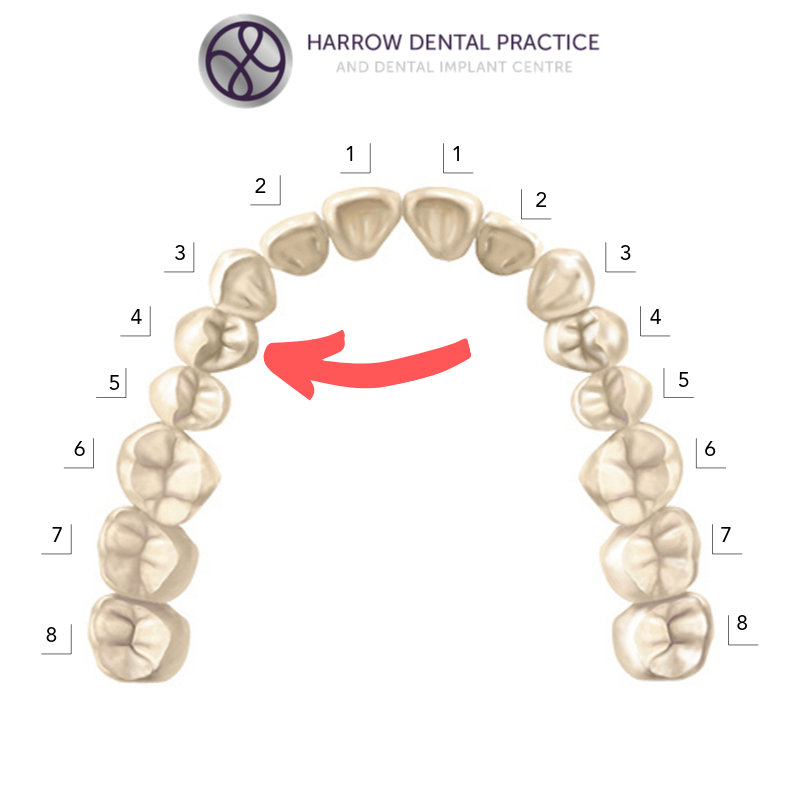
The last tooth in the mouth, the 3rd molar, numbered 8 is what is otherwise known as the wisdom teeth. These can be problematic as there is often not enough room in the mouth meaning they can be impacted and push against the other teeth.
International Standards Organisation
In addition to both the methods above there is also the ISO system which is used widely by dentists internationally. It uses a 2 digit system, the 1st digit indicates the quadrant as follows:
- upper right
- upper left
- lower left
- lower right
In the ISO system, the 2nd number indicates which tooth, start counting from the front tooth and work backwards.
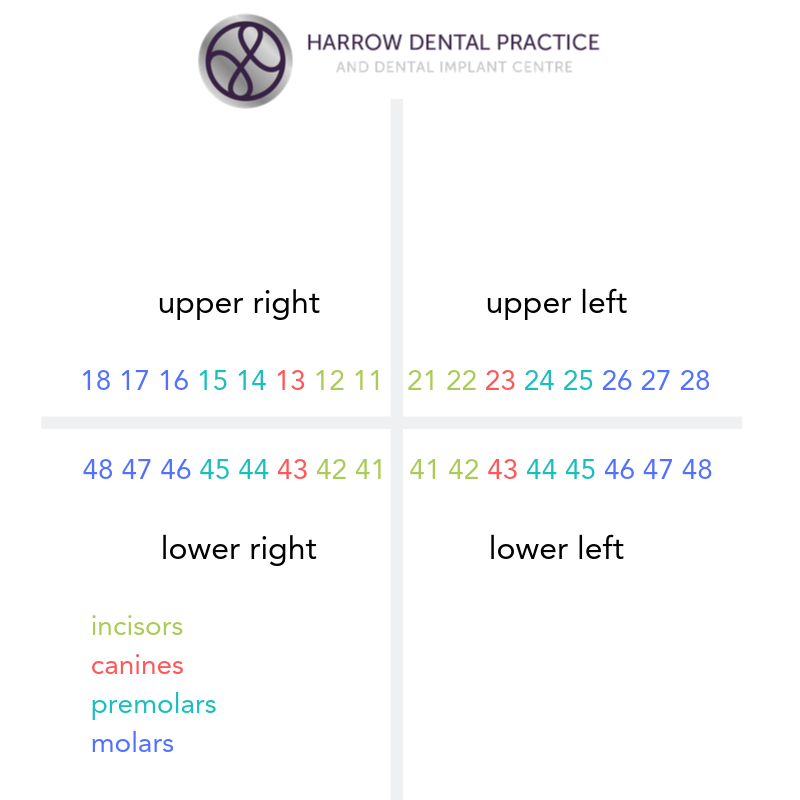
The uses of different teeth
There are different types of teeth in the mouth or groups of teeth, they all have specific uses:
- Incisors for biting into food and tearing off bite-size pieces.
- Canines for sharper biting forces concentrated into a point and also, historically for display in our ancestors. Think of a gorilla who has large canines but does not use them for tearing food, rather they are used for display.
- Premolars and molars for grinding food into smaller sized amounts.
The names for children’s teeth
Baby teeth are also known as deciduous teeth, they are the primary teeth that a human has and are lost in early childhood through to teenage years. This is because an adult needs larger teeth but the baby jaw is not big enough for them to come through at the beginning. Starting at the tooth in the front and working backwards the tooth names are:
- Central.
- Lateral.
- Canine.
- 1st premolar.
- 1st molar.
This is the same on the left and right side making 10 teeth on the top, it is also reflected on the bottom with another 10 teeth making 20 teeth in total.
Most commonly they are referred to in lettering format.
- A – Central.
- B – Lateral.
- C – Canine.
- D – 1st premolar.
- E – 1st molar.
With deciduous teeth many people believe there is no need to look after the children’s teeth as much as possible, after all, the permanent teeth are going to come through afterwards so what is the point as they will have another set of teeth, right?
This however is a dangerous viewpoint.
If children get into bad habits by consuming large amounts of sugar or not following a good oral health care routine then those habits will inevitably work their way through into teenage years and affect adult teeth as they erupt.
If a child has dental decay then the bacteria will be present in the mouth, the higher level of bacteria can then mean that the permanent teeth are also subject to a higher risk of decay.
On top of all of this the bacteria which cause dental decay have also been shown to cause other problems in the body, this could then put the child at risk from a wide variety of other health-related issues.
In summary
If you have any concerns about your teeth in any way at all please do contact your local dentist who will always be happy to help. We recommend taking the children to the dentist as soon as the teeth begin to wrapped as babies, this can help to get used to the dental environment and allow your dentist the opportunity to monitor the baby tooth development as it happens, always watching out for gum disease.

